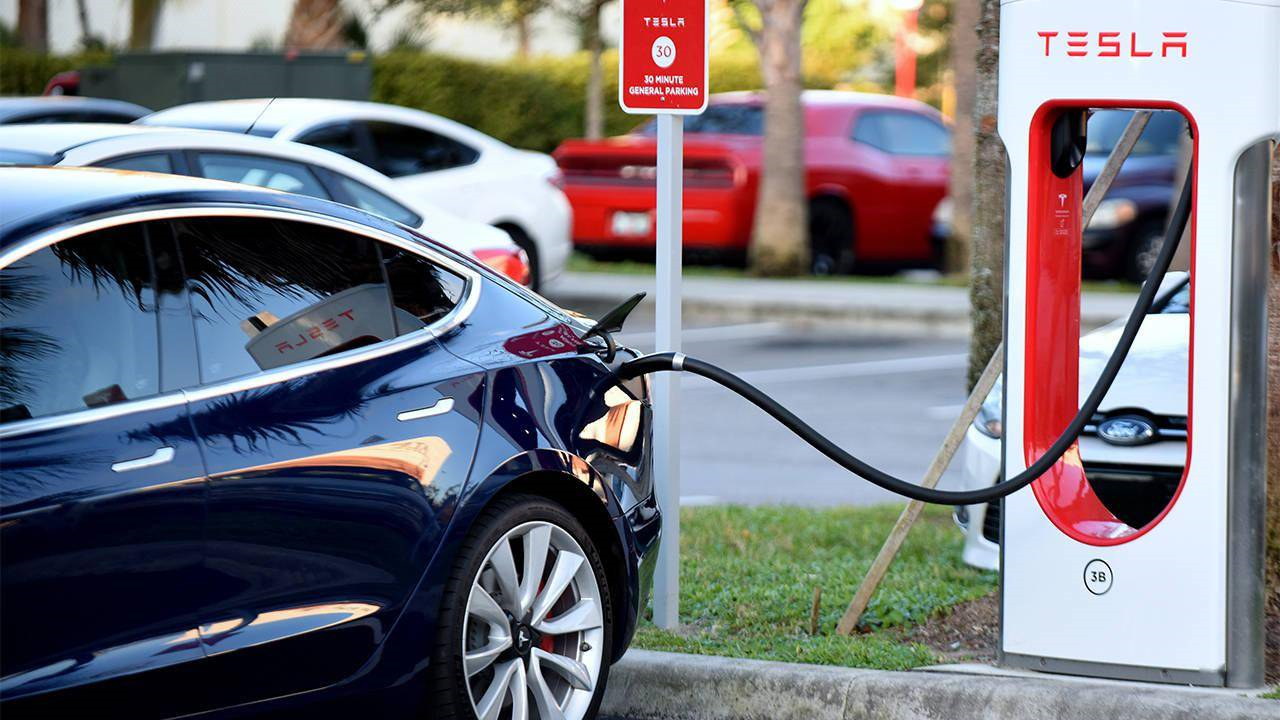Introduction
The demand for electric vehicles (EVs) has been steadily increasing in recent years. As more individuals and businesses embrace sustainable transportation, the need for convenient and accessible EV charging stations has become paramount. This comprehensive guide aims to provide you with all the necessary information to effortlessly install EV charging stations. Whether you are considering installing a charging station at your home or a business owner planning to offer EV charging services, this guide will equip you with the knowledge to make informed decisions.
Planning For EV Charging Station Installation
Installing EV charging stations requires careful planning to ensure effective implementation. Consider the following steps when preparing for EV charging station installation:
Assessing the Need for EV Charging Stations in Your Area
Begin by evaluating the demand for EV charging stations in your area. Assess factors such as the number of electric vehicles on the road, population density, and existing charging infrastructure. Collaborate with local organizations, businesses, and government entities to gather data and insights on the current and projected EV market.
Conducting a Site Evaluation and Feasibility Study
Perform a thorough site evaluation to identify potential locations for the charging stations. Consider factors such as proximity to major roadways, parking availability, access to electrical infrastructure, and visibility. Additionally, conduct a feasibility study to assess the financial viability and technical feasibility of the installation, considering factors like installation costs, utility capacity, and potential revenue streams.
Obtaining Necessary Permits and Approvals
Before proceeding with installation, ensure compliance with local regulations and obtain the necessary permits and approvals. Consult with local authorities, zoning boards, and utility providers to understand the requirements and procedures. This may include permits for construction, electrical work, environmental impact, and building code compliance.
Determining the Ideal Location for EV Charging Stations
Identify the optimal locations for placing the charging stations. Consider convenience, high-traffic areas, proximity to amenities, and accessibility. Collaborate with property owners, businesses, and relevant stakeholders to secure suitable locations and establish partnerships.
By following these planning steps, you can lay a solid foundation for the successful installation and operation of EV charging stations in your area.
Selecting The Right EV Charging Station Equipment
Choosing the appropriate charging station equipment is crucial for an effective and reliable EV charging infrastructure. Consider the following factors when selecting the right equipment:
Types of Charging Equipment Available
Different types of charging equipment are available, each designed to meet specific charging needs. These include:
Level 1 Chargers: These chargers utilize a standard household outlet and provide a slower charging rate suitable for overnight charging or when faster options are not readily available.
Level 2 Chargers: Level 2 chargers require a dedicated 240-volt power supply and offer faster charging speeds, making them ideal for residential, workplace, and public locations.
Level 3 Chargers (DC Fast Chargers): Level 3 chargers deliver rapid charging through direct current (DC) and are typically found along highways and major travel routes. They are designed for quick top-ups and long-distance travel.
Factors to Consider When Choosing Charging Station Equipment
When selecting charging station equipment, it’s essential to consider the following factors:
Charging Speed: Assess the charging speed capabilities of the equipment and ensure it aligns with the desired charging time and range requirements for EVs.
Scalability: Consider the potential future growth and demand for EV charging in the area. Select equipment that allows for scalability and expansion as the EV market evolves.
Durability and Reliability: Look for charging station equipment from reputable manufacturers that produce reliable and durable products. Consider factors such as weather resistance, build quality, and warranty options.
Understanding Charging Connectors and Compatibility
Charging connectors play a vital role in establishing a connection between the charging station and the EV. It’s crucial to understand the different connector types and ensure compatibility with the EV models that will be utilizing the charging infrastructure. Common connector types include Type 1 (SAE J1772), Type 2 (IEC 62196), CHAdeMO, and CCS (Combined Charging System).
Infrastructure Requirements For EV Charging Stations
Setting up EV charging stations requires careful consideration of the necessary infrastructure. Here are key aspects to address when it comes to infrastructure requirements:
Electrical System Upgrades and Capacity Planning
Before installing EV charging stations, it’s important to assess the electrical system’s capacity and determine if any upgrades are necessary. Consider factors such as the available power supply, load capacity, and compatibility with the charging equipment. Upgrades may include increasing electrical panel capacity, installing dedicated circuits, or integrating smart load management systems to optimize power distribution.
Assessing Power Supply Options and Requirements
Evaluate the power supply options available for the charging stations. Depending on the charging speed and number of stations, you may need to consider a three-phase power supply or dedicated transformers to meet the increased electrical demand. Consult with an electrician or electrical engineer to ensure the power supply meets the requirements of the charging equipment and the anticipated charging loads.
Backup Power Solutions for Uninterrupted Charging
To ensure uninterrupted charging services, it’s essential to have backup power solutions in place. Consider incorporating battery storage systems or backup generators to provide power during grid outages or emergencies. Backup power solutions can help maintain a reliable charging infrastructure, enhance user experience, and mitigate the risk of service disruptions.
Installation Process For EV Charging Stations
Installing EV charging stations requires careful attention to ensure a safe and efficient process. Follow these key steps during the installation:
Hiring a Qualified Electrician or Contractor
Engaging a qualified electrician or contractor experienced in EV charging station installations is crucial. They will possess the necessary expertise to handle electrical connections, safely install charging equipment, and comply with local regulations. Ensure that the electrician or contractor is certified and has a track record of successful EV charging station installations.
Guidelines for Safe and Efficient Installation
During the installation process, adhere to the following guidelines:
- Conduct a thorough site inspection to determine the best location for the charging station, considering factors like accessibility, parking space, and visibility.
- Follow the manufacturer’s instructions and guidelines for properly installing the charging station equipment.
- Ensure proper grounding and electrical connections to guarantee user safety and prevent electrical faults.
- Use suitable materials and hardware for mounting and securing the charging station, considering weather resistance and durability factors.
- Test the charging station’s functionality before making it available for public use, ensuring it meets the required safety standards.
Ensuring Compliance with Relevant Electrical Codes and Regulations
It is essential to comply with all relevant electrical codes and regulations during the installation process. These codes and regulations are in place to safeguard user safety, maintain quality standards, and ensure proper electrical connections. Familiarize yourself with the local electrical codes, permitting requirements, and any specific regulations related to EV charging stations. This may include obtaining electrical permits, submitting installation plans for review, and scheduling inspections.
Maintenance And Troubleshooting Of EV Charging Stations
Regular maintenance and effective troubleshooting are essential to ensure the continued performance and reliability of EV charging stations. Consider the following practices:
Regular Maintenance Practices for Optimal Performance
Performing routine maintenance is crucial to keep EV charging stations in optimal condition. Some key maintenance practices include:
- Inspecting charging cables and connectors for any signs of wear or damage. Replace any damaged components promptly.
- Cleaning charging equipment and stations to remove debris, dust, or other contaminants that may affect charging performance.
- Conduct regular software updates to ensure compatibility, security, and access to the latest features and improvements.
- Monitoring and testing the functionality of charging equipment, including checking for proper voltage, current, and power output.
Troubleshooting Common Issues and Resolving Problems
Despite regular maintenance, issues may arise with EV charging stations. Being able to identify and resolve common problems is important. Some common issues include:
- Charging equipment not powering on or responding: Check the power supply, fuses, and circuit breakers to ensure they function correctly.
- Slow charging or interrupted sessions: Inspect the charging cables and connectors for loose connections or damage. Address any issues promptly to ensure a consistent charging experience.
- Network connectivity problems: Troubleshoot network connections and ensure proper communication between the charging stations and management systems.
Contacting Customer Support and Warranty Information
In case of complex issues or situations beyond your expertise, reaching out to customer support is recommended. Most reputable charging station manufacturers provide customer support services. Consult the product documentation or manufacturer’s website for contact information. Additionally, familiarize yourself with the warranty terms and conditions of the charging equipment. If necessary, contact the manufacturer for warranty-related inquiries or support.
In conclusion, this comprehensive guide has provided valuable insights into effortlessly installing EV charging stations. We covered the importance of EV charging infrastructure, understanding the types of charging stations, selecting the right equipment, and planning the installation process. We also discussed infrastructure requirements, networking and management systems, and maintenance practices.
By following this guide, you can contribute to developing a robust and accessible charging network that supports the growing adoption of electric vehicles. Embrace the opportunities presented by sustainable transportation and electrify the future with EV charging stations.
Post time: Nov-09-2023

 Portable EV Charger
Portable EV Charger Home EV Wallbox
Home EV Wallbox DC Charger Station
DC Charger Station EV Charging Module
EV Charging Module NACS&CCS1&CCS2
NACS&CCS1&CCS2 EV Accessories
EV Accessories


